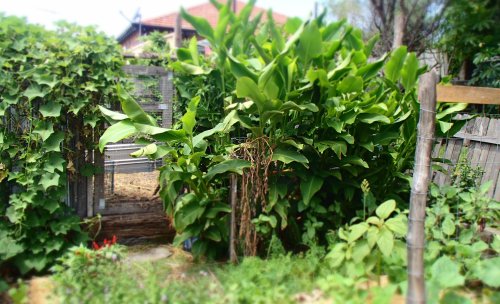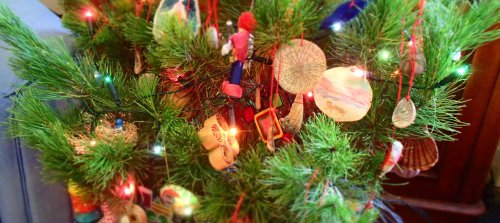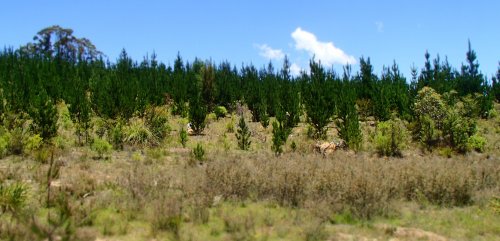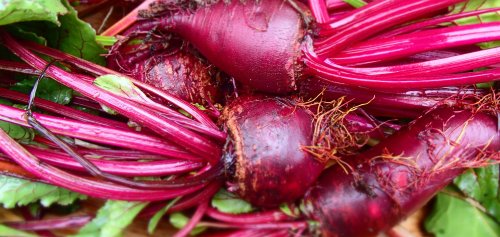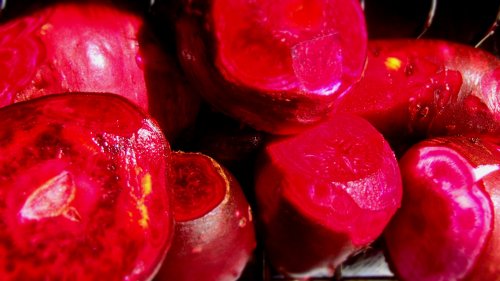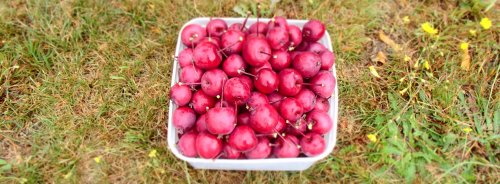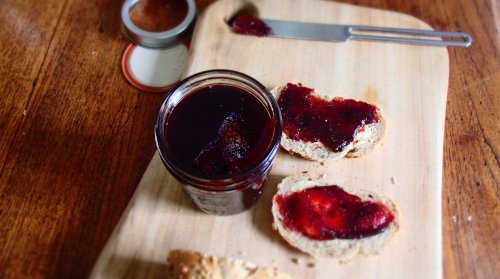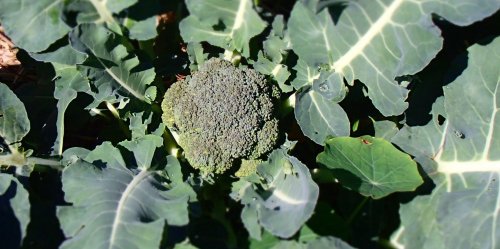Fat of the Land and Sea Week 2015 is on! Eight city folks living on hunted, foraged, fished and home-grown food only. Altogether too much too write about with too little time to spare, so I’ll be doing well to just update this post with each day’s haul. It will otherwise be done in pictures on the Instagram feed to the right and on Instagram itself @foragersyear. There will also be posts by others on Instagram using the hashtag #FOTLAS2015. Come along for the ride.
Archive for the ‘Uncategorized’ Category
Fat of the Land and Sea Week 2015 is on!
Posted in Uncategorized on February 28, 2015| Leave a Comment »
Getting ready for Fat of the Land and Sea Week: 1-7 March 2015
Posted in Uncategorized, tagged foraging, fotlas2015, home grown veg, self-suffiency, wild food on February 19, 2015| 6 Comments »
It seems like kind of a big thing, in the modern urban workaday world, to live for one whole week only on home-grown and wild food. Outside of that world, it might seem as unremarkable a challenge as going without a fax machine. But the eight of us doing it are mostly desk workers, in small houses and apartments in the city, albeit foragers, fishers, hunters and vegie growers to varying extents in varying amounts of our spare time.
It isn’t intended as some desperate challenge where a reality TV version would find some of us in starving tears. It is intended as a celebration. Kind of like an old-fashioned harvest festival. We have enough up our sleeves in terms of backyard crops, fishing kit including boats and skills, hunting gear, property access and foraging knowledge to suggest that hunger will not be a huge shadow hanging over us. We are doing it because we never have before and because we can, fully aware that this means that we are very fortunate people.
It begins on Sunday 1st of March and ends with a feast on the following Saturday the 7th. At the discretion of each of us on board, we can nominate exceptions. I could call mine the ‘amphora rule’, allowing me olive oil and wine. Another guy is allowing previously foraged condiments; of two caffeine loving blokes who live near each other, one has chosen tea and the other coffee and plan to meet regularly to make each other a cuppa over food swaps; one guy is hedging his bets with flour – quite sensible really, allowing the week to be the fun that it is meant to be with a backup sure to guarantee him a seat at the final feast table of set-aside treats.
It will be busy, ‘hard work’ when added to the fact that we will all be largely keeping up the real jobs, so there will be no blogging at the time. Instead, I have gotten my head around Instagram to try to document the week as it unfolds. Images will come up here (at right of screen) if you aren’t on Instagram. If you are, my pics are @foragersyear. There will also be posts by others on Instagram using the hashtag #FOTLAS2015. Come along for the ride.
Cast
Mike H: Spearo, fisher, forager (www.theforagers.com.au and @mostlyfish on IG)
Mike L: Fisher, hunter, grower
Ed: Hunter, forager
Justin: Hunter, forager
Alex: Spearo, fisher, forager
John: Spearo, hunter, fisher, forager, chef (@johnralley on IG)
Andrew: Grower, forager
Oliver (me): Grower, hunter, beekeeper, fisher, forager
Making the most of it: Fish head and herb pie
Posted in Animals, Fishing, In the kitchen, Summer, Uncategorized, tagged fish head pie, fishing, wild food on January 3, 2015| 5 Comments »
With a decent haul of summer fish, it feels good to be able to put a little more seafood on the table. My share of a recent catch included one kingfish (Seriola lalandi), three nannygai (Centroberyx affinis), two flathead (Platycephalus sp.) and a blue morwong (Nemadactylus douglasii) (something else (probably a morwong) stolen on the retrieve by a fur seal (Arctocephalus forsteri) of all things). After a little sashimi sampling of kingfish and some fresh nannygai fillets in fish burritos, attention turns to the offcuts. Time for fish head pie.
Anything filleted (kingfish and nannygai) or beheaded before freezing (flathead) gets frames and heads thrown in the slow cooker with just enough water to cover. The tails are omitted as it turns out the dog has a penchant for crunching them down; although she’d have not got it off the pigfish (Bodianus unimaculatus) that the skipper took home, because the seal had already helped itself to it.
Once cooked, the fish heads are taken out and all the flesh is picked off and set aside; then the remains go back in the cooker along with a big bunch of herbs (thyme, sage, kaffir lime, lemon myrtle, lemon grass, Vietnamese mint, parsley and Thai basil). Once fragrant it all gets strained to become a very herby fish stock.

A lot of herbs smells at first like it might be overdoing it, but by the time it gets into the stodginess of a mornay sauce it mellows a lot
The concentrated stock then becomes the base of a fish and herb mornay (white sauce with cheese), has the picked flesh stirred in and allowed to cool. After an optional additional stirring through of a raw egg or two, it is topped with puff pastry and baked as fish head pot pie. Summer is here and it is a wonderful thing to live near the sea and a herb garden.
The foraged Christmas tree (Pinus radiata) and decorations
Posted in Uncategorized on December 23, 2014| Leave a Comment »
In Australia, or at least in that part of it where most of us live, radiata pines (Pinus radiata) are what we think of as Christmas trees. Anything from a grocer’s, a petrol station or random roadside stalls have them racked up for sale from early December – this one species and this one species only. The important thing, from the market’s point of view, is that it is a pine. Just like in the pictures. Some people even spray fake snow on it. It is a part of our culture and we have one too.
There is a debate out there surrounding whether, on environmental grounds, one should have a plastic Christmas tree (imitating a fir) used many times as opposed to a real tree (a pine) cut down for every year. Each side comes with arguments for and against and many permutations, like how big a real one is or how many times a plastic one might be re-used. Our Christmas tree right now, like the other few times we have had one (basically since there was a child in the house) solves the fact that the aforementioned argument is one of lesser evils so marginally separated as to be a bit of a waste of time. Ours is a foraged wilding pine (and it is small enough to easily compost in the chook run). To be honest, the decision is not actually driven by the potential access to environmental moral high ground. I just get a personal kick out of foraging stuff, Christmas tree (and decorations) included.
Out on the edge of pine forests, which around here is where introduced radiata pines are plantation grown, there are inevitably some adventurous wildings that strike out on their own. Wildings – offspring of domesticates that have gone feral – plucky as they are, can be the progenitors of weeds. Whether they get mowed down in ongoing forest management or hung with baubles in my living room makes very little difference to their fate. I typically go for a small one, nothing that needs anything more than some garden secateurs to cut down.
The foraging thing doesn’t end there. Foraged Christmas tree decorations are, in our house, undoubtedly more important than the tree itself. Years ago on a trip that landed me on a remote Nullarbor beach with cast up sea urchin shells that looked more than anything else like Christmas tree baubles, I began a collection. Other shells, bones, fossils and artefacts have been added along the way. Put them on a string and they are Christmas tree decorations. Then, when we were settled and ‘grown up’ the box arrived from the Squeeze’s mum – a few old personally home-made and dearly gifted decorations that are as much biographical as ornamental.
It’s a kind of shoddy looking thing, our Christmas tree. Wedged in a garden pot in the neck of a lobster trap to keep it upright, Where a 35 year old crayon drawing on a circle of half-rotten paper sits alongside a 180 million year old belemnite fossil, a disk of whale bone, a sea urchin shell and trinket gifts from people’s travels around the world.
Merry Christmas.
Allspiced (Pimenta dioica) Beetroot (Beta vulgaris) relish
Posted in Uncategorized on September 13, 2014| 5 Comments »
I love beets (Beta vulgaris). They are easy to grow, they are hardy, they are delicious. They yield lovely greens from the early thinnings, then baby beets which also have the lovely greens, then big beets from the remainder (still with good greens in winter). The offcut leaves go to the chooks, where I believe they give me more orange yolks and I love orange yolks, even if it just a psychological reminder that my eggs are the real deal. I love them roasted, particularly when cooled and served with pithless orange segments in a salad with goats cheese; and I love beetroot chutney and relish. You can leave them be and harvest them as you need, as long as you don’t let them warm up into flowering; but sometimes you want to harvest an entire row so that you can plant the next thing. That’s when it is relish time. Last weekend, because it was time to open up space from winter crops for the new spring plantings, was just such a relish time. This one concentrated on allspice (Pimenta dioica) for flavour, because it doesn’t really taste like ‘all spices’ at all, but rather a few that all suit relish really rather well, like clove, cinnamon and nutmeg.
Ingredients
- 3 Tbsp Olive oil
- 4 tsp mustard seeds
- 1 tsp ground pimento / all spice (don’t over-spice; start modestly and you can add some to taste during the long cook, but you can never get it out if you use too much at the start)
- 2 tsp salt
- 1 – 2 cups brown sugar (honey substitution is a future plan)
- 6 beetroots (~1kg) (grated) (skin on if it is in good nick, but shave off any rough or warty bits)
- 1 or 2 onions, depending on size, finely sliced (red, brown or white, in order of preference)
- 4 cloves garlic (optional, it might not even make it better; but I just can’t say no to the stuff)
- Zest and juice of 1 orange
- 5 cups vinegar (balsamic, cider and/or red wine; weigh your beets because vinegar needs to be at least 1/3 the weight of beetroot to preserve well)
- Top with orange juice, water or cider vinegar, depending on preference, if it gets short on moisture during the cook.
Instructions
Add everything in the order above, stirring as you go; slow cook for an hour or two; put in sterilised jars and then sterilise again in a hot water bath. Have some patience, then serve on bread with cheese and salad.
Backyard foraging: Crab apple (Malus domestica) jelly
Posted in Uncategorized, tagged crab apple, crab apple jelly, foraging, malus domestica on September 3, 2014| 3 Comments »
A crab apple (Malus domestica, which includes all apples) is one of two things. To many, it is thought of as a wilding apple (like the roadside trees that are a forager’s delight, grown from pips of cores tossed out car windows, one likes to think). They are crabs because in the random dice throw of apples from seed, they are typically too tart to be thought of as much of an eating apple (though the random exceptions are one of the reasons that there are so many hundreds of different named apple varieties). The other interpretation is that they are the small-fruited ornamental varieties which, selected for appearance rather than taste, also almost invariably revert back to the native apple tartness.
The glory of the ornamental small fruited crabs is that their main purpose in life is to be bedecked in countless spring flowers; and then be bedecked in just as many fruit (which stay for a long time on the tree showing off (like Seville oranges)) through late summer and autumn. Being viewed as a looker rather than a cooker, and a great looker at that, people often don’t realise that they are perfectly edible. They put out a lot of fruit, so much so that all but the stingiest gardeners would probably let you pick your fill, and they actually have some great virtues as cooking apples. The rich ruby skins make for rich ruby pulp and juice and the tartness comes with a high pectin, high acid zing. It makes them kind of like quinces, but with the ruby colour that quinces somehow alchemically create being there even before cooking.
For our crab apple jelly, from the garden of my family’s place in New Zealand, the recipe is simple:
Spring flower salad (not just the garnish)
Posted in Uncategorized, tagged flower salad on August 31, 2014| 5 Comments »
Watching a head of broccoli (Brassica oleracea) on a grocer’s shelf isn’t much of a spectator event, but watching one come slowly to fruition in your own garden is fine entertainment, the intrigue and expectation rising with each daily episode. You want it to become as big as it will get, but not to burst into actual flower. And you want to do it justice because it has been the star of a show before it even got to the kitchen.
And then the thinking starts about how broccoli is a flower bud, and how you have been enjoying flowers in salads of late from the calendula (Calendula officinalis), marigold (Tagetes sp.) and nasturtium (Tropaeolum majus) you planted as companions and the rocket (Eruca sativa) that has rocketed on all winter out the front. Capers (Capparis spinosa; more flower buds) and honey (bee-processed flower juice) could go in a fresh mayonnaise, mixed over the steamed broccoli and the whole thing strewn with petals. Deep-fried onion flowers (actual flowers, not where you cut an onion so that it looks like a bloom) come out a bit bitter and are dusted on top only very lightly. It is the last day of winter, but spring is well and truly here.

